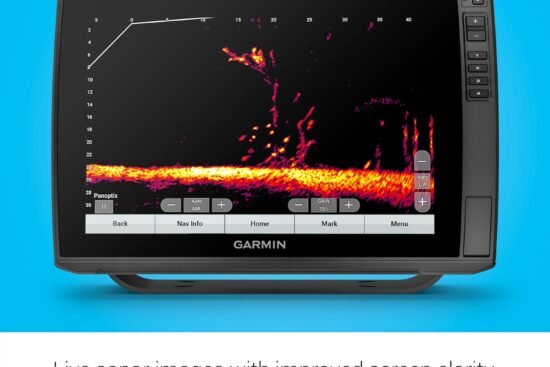
So you’re in the market for a new smartphone, but you can’t decide whether to go with an Android or an iPhone. It’s a tough decision, and one that many people face. After all, these two operating systems dominate the market, each with its own set of unique features and loyal fan base. From endless customization options to seamless user experience, Android and iPhone both have their merits. In this article, we’ll break down the pros and cons of each operating system, helping you make an informed decision on which one is better suited to your needs and preferences.
Design and User Interface
Android
Android is known for its customizable and versatile design. The user interface on Android devices can be tailored to your liking, allowing you to easily personalize your smartphone or tablet. The operating system offers a variety of customizable themes, wallpapers, and icon packs, giving you the freedom to create a unique and visually appealing home screen. Additionally, Android provides widgets that can be placed on your home screen for quick access to your favorite apps, contacts, and other information. The design of Android is intuitive, with simple navigation and organized settings.
iPhone
On the other hand, iPhone boasts a sleek and minimalist design that is instantly recognizable. The user interface is clean, with a grid of icons on the home screen for easy access to apps. Apple puts a lot of emphasis on simplicity and ease of use, making the iPhone interface intuitive and user-friendly. The design of iOS is consistent across all iPhone models, ensuring a seamless experience for users. Apple devices also offer a seamless integration with other Apple products, such as Mac computers and iPads, which adds to the overall user experience.
Customization and Flexibility
Android
When it comes to customization and flexibility, Android takes the lead. Android devices offer a wide range of options for customization, allowing you to personalize your device to suit your preferences. You can change the launcher, install custom ROMs, and even customize the appearance of the navigation buttons. Furthermore, Android allows you to download and use various third-party apps that can enhance your device’s performance or add new features. This level of customization and flexibility is ideal for tech-savvy individuals who enjoy having control over their device’s appearance and functionality.
iPhone
While iPhone may not offer as much customization as Android, it still provides a certain degree of flexibility. Apple has introduced features like the App Library, which helps you organize and declutter your home screen, and the ability to add widgets to the home screen with the latest iOS update. Although there are limitations compared to Android, Apple’s focus on simplicity ensures that the customization options available are user-friendly and straightforward. If you prefer a more streamlined and cohesive experience, iPhone’s customization options may be sufficient for your needs.
App Store
Android
The Google Play Store is the official app store for Android devices, offering millions of apps and games for download. One of the advantages of the Play Store is its open nature, allowing developers to easily publish their apps. This results in a wide variety of apps covering various categories, ranging from productivity to entertainment. Additionally, Android provides the option to sideload apps from outside the Play Store, giving you access to apps that may not be available through official channels.
iPhone
The Apple App Store is where iPhone users go to download apps and games. Apple has strict guidelines for app developers, resulting in a curated selection of high-quality apps. The App Store provides a seamless and secure experience, with apps being thoroughly vetted before being approved for download. This ensures that iPhone users have access to apps that are optimized for their device and meet Apple’s quality standards. While the App Store may have a smaller selection of apps compared to the Play Store, the overall quality and user experience are top-notch.
Device Options
Android
Android offers a wide variety of device options from various manufacturers, giving you the freedom to choose a smartphone or tablet that best suits your needs and preferences. Whether you prefer a budget-friendly option or a high-end flagship device, Android has you covered. You can choose from different form factors, screen sizes, and hardware specifications depending on your usage requirements. This abundance of options ensures that there is an Android device for everyone, regardless of their budget or preferences.
iPhone
Apple, on the other hand, offers a more limited selection of devices. Currently, there are a few iPhone models available, each differing in terms of size, performance, and price. While this may be seen as a limitation by some, it also means that Apple can focus on ensuring a high level of quality and consistency across its devices. Whether you opt for the latest flagship iPhone or a more affordable option, you can expect a premium build quality and excellent performance.
Performance and Speed
Android
In terms of performance and speed, Android has come a long way over the years. The latest Android devices are equipped with powerful processors and ample RAM, resulting in smooth multitasking and lag-free performance. However, due to the open nature of the operating system and the wide variety of hardware configurations available, some Android devices may not perform as well as others. Lower-end or older Android devices may experience occasional slowdowns or lag, especially when running resource-intensive apps or games.
iPhone
Apple is well-known for its optimization and performance capabilities. iPhones consistently deliver fast and smooth performance, thanks to Apple’s tight control over both the hardware and software aspects of their devices. The powerful processors and efficient memory management ensure that even older iPhone models can handle demanding tasks with ease. Whether you’re browsing the web, playing games, or using resource-intensive apps, you can expect a seamless and responsive experience on an iPhone.
Battery Life
Android
Battery life on Android devices can vary depending on the device itself and how you use it. With a wide variety of Android smartphones available, it’s important to consider factors such as battery capacity, screen size, and software optimization. While some Android devices may offer exceptional battery life, others may struggle to last through a full day of heavy usage. It’s worth noting that Android devices often offer features like battery-saving modes and the ability to customize power settings, allowing you to optimize battery usage according to your needs.
iPhone
iPhone is known for its impressive battery life, with Apple optimizing both hardware and software to ensure efficient power consumption. iPhones generally offer all-day battery life, even with heavy usage. The combination of Apple’s A-series chips and iOS optimization helps iPhones achieve great battery performance. Additionally, iOS provides battery-saving features like Low Power Mode, which extends battery life by reducing system animations and background activity. If battery life is a top priority for you, iPhone is a reliable choice.
Security
Android
One of the common concerns with Android has been security. Due to its open nature and the multitude of app sources available, there is a higher risk of malware and malicious apps on Android devices. However, Google has been working diligently to improve security on the platform. Android now has robust security measures in place, such as Google Play Protect, which scans apps for potential threats, and regular security updates that address vulnerabilities. It’s important to stay vigilant and download apps only from trusted sources to ensure a secure Android experience.
iPhone
Apple has a strong reputation for prioritizing security and privacy. iPhones benefit from Apple’s closed ecosystem, where all apps are carefully reviewed before being made available on the App Store. This significantly reduces the risk of malware or malicious apps on iOS devices. Furthermore, Apple provides regular software updates that not only bring new features but also include important security patches. With features like Face ID or Touch ID for secure authentication, iPhones offer a high level of security and peace of mind for users.
Integration with Other Devices
Android
Android devices are known for their compatibility and integration with a wide range of devices and platforms. Whether you’re using a Windows PC, a smart TV, or other smart devices, Android offers seamless integration and synchronization. You can easily transfer files, access your photos and videos, or control your smart home devices from your Android device. The open nature of Android allows for greater versatility when it comes to integrating with other devices, making it the preferred choice for those who want a connected ecosystem.
iPhone
Apple excels in providing a seamless ecosystem with its range of devices. iPhones integrate seamlessly with other Apple products such as Mac computers, iPads, and Apple Watches. This integration allows for effortless synchronization of messages, email, documents, and more across all your Apple devices. Additionally, using features like AirDrop, you can easily share files between Apple devices with just a few taps. If you already own other Apple products or are deeply invested in the Apple ecosystem, iPhone offers a cohesive and connected experience.
Price Range
Android
One of the significant advantages of Android devices is the wide range of price options available. Android offers devices in every price range, from budget-friendly options to high-end flagship models. Whether you’re looking for a smartphone with basic features or one packed with the latest technology, you can find an Android device to suit your budget. This affordability makes Android a popular choice for those who prioritize value for money and want a quality device without breaking the bank.
iPhone
Apple’s iPhone, on the other hand, is known for being on the higher end of the price spectrum. iPhones are generally more expensive compared to Android devices, especially when it comes to flagship models. While the higher price tag may deter some customers, it’s important to note that iPhones often come with a premium build quality, superior performance, and seamless integration with other Apple devices. For those who value the overall user experience and are willing to invest in a premium device, the higher price of an iPhone may be justified.
Updates and Longevity
Android
One of the ongoing concerns with Android devices has been the timeliness of software updates. Since Android is available on a variety of devices from different manufacturers, the update process can be fragmented. Some manufacturers provide regular updates, while others may be slower to roll out the latest Android versions. It’s important to choose an Android device from a manufacturer that has a good track record of timely updates to ensure you receive the latest features and security patches. Additionally, the lifespan of an Android device can vary depending on the manufacturer’s commitment to providing ongoing support and updates.
iPhone
Apple has a reputation for providing regular software updates for its devices. iPhones typically receive timely updates for several years, ensuring that users have access to the latest features and security enhancements. This long-term support is one of the advantages of owning an iPhone, as it allows you to enjoy new software features and improvements even several years after your purchase. Apple’s commitment to updates and longevity makes iPhones a solid choice for those who want a device that will remain up-to-date for an extended period.
In conclusion, both Android and iPhone offer unique features and advantages. Android provides customization options, a wide range of device options, and integration with various platforms. On the other hand, iPhone offers a sleek design, optimized performance, and a cohesive ecosystem. When it comes to design and user interface, customization and flexibility, app store experience, device options, performance and speed, battery life, security, integration with other devices, price range, and updates, it ultimately depends on your personal preferences and priorities. Consider your desired level of customization, ecosystem compatibility, budget, and priorities such as performance and security to determine which operating system is better suited for you.




